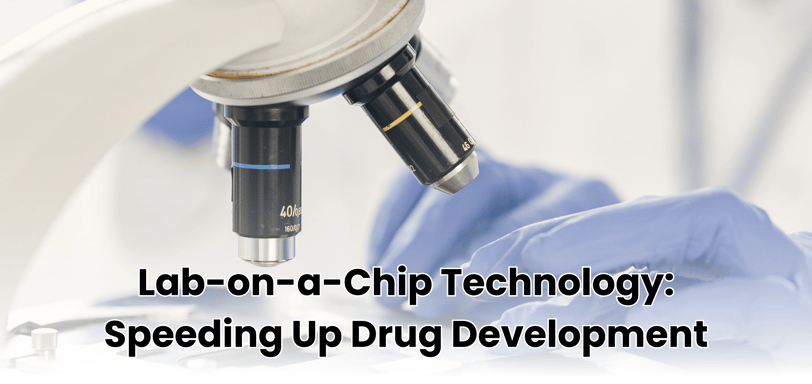Lab-on-a-Chip Technology: Speeding Up Drug Development
In the ever-evolving world of pharmaceutical research, efficiency and precision are crucial for accelerating drug development. One of the most promising innovations transforming the industry is Lab-on-a-Chip (LoC) technology. These miniature laboratories integrate multiple laboratory functions onto a single microchip, offering rapid testing, cost efficiency, and enhanced accuracy. But how exactly does this technology speed up drug development? Let’s explore.
1/31/20252 min read


What is Lab-on-a-Chip Technology?
Lab-on-a-Chip (LoC) is a microfluidic technology that allows researchers to conduct complex biochemical and cellular assays on a chip-sized device. These chips, often no larger than a credit card, incorporate fluid channels, sensors, and reaction chambers to perform analyses that traditionally require large, expensive lab equipment. The ability to manipulate tiny volumes of fluids with high precision makes LoC an invaluable tool in pharmaceutical research.
How LoC Technology is Accelerating Drug Development
1. High-Throughput Screening and Drug Discovery
Traditional drug screening methods involve testing thousands of compounds to identify potential drug candidates. LoC technology streamlines this process by enabling high-throughput screening on a microscale. Researchers can rapidly analyze interactions between drug compounds and biological targets, significantly reducing the time required for preliminary drug discovery.
2. Faster Preclinical Testing
Preclinical testing, which involves evaluating drug safety and efficacy on cells and tissues, is often time-consuming and expensive. LoC technology facilitates microfluidic cell culture systems, allowing researchers to mimic human physiological conditions more accurately. This leads to better predictive models and reduces the reliance on animal testing, expediting the transition to clinical trials.
3. Personalized Medicine Advancements
LoC devices can analyze patient-specific data, enabling personalized drug formulations. By testing individual responses to medications on a microfluidic chip, researchers can optimize dosages and minimize adverse effects. This precision medicine approach is revolutionizing treatments for diseases like cancer, where tailored therapies improve patient outcomes.
4. Cost Reduction in Drug Development
The traditional drug development pipeline is notoriously expensive, often costing billions of dollars over several years. LoC technology reduces these costs by minimizing reagent consumption, automating workflows, and increasing efficiency in early-stage research. This affordability makes drug discovery accessible to smaller biotech firms and research institutions.
5. Real-Time Monitoring and Diagnostics
LoC devices are also being integrated with biosensors to provide real-time monitoring of biochemical reactions. This capability allows researchers to quickly detect drug efficacy, toxicity, and metabolic responses, leading to more informed decision-making during drug formulation and development.
Challenges and Future Prospects
While LoC technology offers numerous benefits, challenges remain in standardization, scalability, and regulatory approval. The integration of artificial intelligence (AI) and machine learning with LoC platforms is expected to further enhance predictive modeling and data analysis. As advancements continue, LoC technology is poised to become a cornerstone of modern pharmaceutical research, significantly reducing the time and cost associated with bringing new drugs to market.
Conclusion
Lab-on-a-Chip technology is revolutionizing drug development by enabling rapid, cost-effective, and precise testing. From high-throughput screening to personalized medicine, its applications are reshaping the pharmaceutical landscape. As the technology matures, it holds the potential to make drug discovery faster, more efficient, and more accessible, ultimately benefiting patients worldwide.
